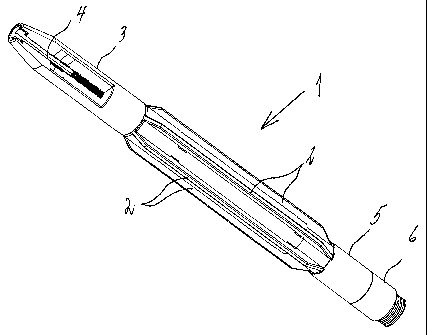Some of the information on this Web page has been provided by external sources. The Government of Canada is not responsible for the accuracy, reliability or currency of the information supplied by external sources. Users wishing to rely upon this information should consult directly with the source of the information. Content provided by external sources is not subject to official languages, privacy and accessibility requirements.
Any discrepancies in the text and image of the Claims and Abstract are due to differing posting times. Text of the Claims and Abstract are posted:
| (12) Patent Application: | (11) CA 2615767 |
|---|---|
| (54) English Title: | ADJUSTABLE WINGED CENTERING TOOL FOR USE IN PIPES WITH VARYING DIAMETER |
| (54) French Title: | OUTIL DE CENTRAGE AJUSTABLE A AILETTES DESTINE A UNE UTILISATION DANS DES TUYAUX DE DIAMETRE VARIABLE |
| Status: | Deemed Abandoned and Beyond the Period of Reinstatement - Pending Response to Notice of Disregarded Communication |
| (51) International Patent Classification (IPC): |
|
|---|---|
| (72) Inventors : |
|
| (73) Owners : |
|
| (71) Applicants : |
|
| (74) Agent: | SMART & BIGGAR LP |
| (74) Associate agent: | |
| (45) Issued: | |
| (86) PCT Filing Date: | 2006-07-28 |
| (87) Open to Public Inspection: | 2007-02-08 |
| Availability of licence: | N/A |
| Dedicated to the Public: | N/A |
| (25) Language of filing: | English |
| Patent Cooperation Treaty (PCT): | Yes |
|---|---|
| (86) PCT Filing Number: | PCT/NO2006/000290 |
| (87) International Publication Number: | WO 2007015647 |
| (85) National Entry: | 2008-01-17 |
| (30) Application Priority Data: | ||||||
|---|---|---|---|---|---|---|
|
The present invention relates to an adjustable centering tool (1) for use in
pipes of varying inner diameter, said centering tool (1) being provided with a
number of identical and steplessly adjustable, radially protruding wings (2)
having guiding lugs (2') and chamfered end faces (2"). The invention is
characterized in that the wings (2), having been set, are retained by an upper
lock mandrel (3) with a safety pin (4) and a lower lock mandrel (5) with a
safety nut (6), the outer circumference of a cylindrical tool body (7) being
fitted with longitudinal grooves (8) having sloped terminations (8X)
cooperating with the wing dimensions, the chamfered end faces (2") of the
wings (2), and the guiding lugs (2'), respectively.
La présente invention concerne un outil de centrage ajustable (1) destiné à une utilisation dans des tuyaux de diamètre intérieur variable, ledit outil de centrage (1) étant muni d'un certain nombre d'ailettes (2) saillant radialement, identiques et ajustables en continu, munies d'oreillettes de guidage (2') et de faces d'extrémité chanfreinées (2"). L'invention est caractérisée en ce que les ailettes (2), une fois mises en place, sont retenues par un mandrin de verrouillage supérieur (3) avec une goupille de sécurité (4) et un mandrin de verrouillage inférieur (5) avec un écrou de sécurité (6), la circonférence externe d'un corps d'outil cylindrique (7) étant munie de gorges longitudinales (8) ayant des terminaisons inclinées (8X) correspondant aux dimensions des ailettes, aux faces d'extrémité chanfreinées (2") des ailettes (2), et aux oreillettes de guidage (2'), respectivement.
Note: Claims are shown in the official language in which they were submitted.
Note: Descriptions are shown in the official language in which they were submitted.

2024-08-01:As part of the Next Generation Patents (NGP) transition, the Canadian Patents Database (CPD) now contains a more detailed Event History, which replicates the Event Log of our new back-office solution.
Please note that "Inactive:" events refers to events no longer in use in our new back-office solution.
For a clearer understanding of the status of the application/patent presented on this page, the site Disclaimer , as well as the definitions for Patent , Event History , Maintenance Fee and Payment History should be consulted.
| Description | Date |
|---|---|
| Application Not Reinstated by Deadline | 2011-07-28 |
| Time Limit for Reversal Expired | 2011-07-28 |
| Deemed Abandoned - Failure to Respond to Maintenance Fee Notice | 2010-07-28 |
| Letter Sent | 2008-09-08 |
| Letter Sent | 2008-09-08 |
| Inactive: Single transfer | 2008-06-11 |
| Inactive: Cover page published | 2008-04-09 |
| Inactive: Declaration of entitlement/transfer requested - Formalities | 2008-04-08 |
| Inactive: Notice - National entry - No RFE | 2008-04-04 |
| Inactive: First IPC assigned | 2008-02-08 |
| Application Received - PCT | 2008-02-07 |
| National Entry Requirements Determined Compliant | 2008-01-17 |
| Application Published (Open to Public Inspection) | 2007-02-08 |
| Abandonment Date | Reason | Reinstatement Date |
|---|---|---|
| 2010-07-28 |
The last payment was received on 2009-07-02
Note : If the full payment has not been received on or before the date indicated, a further fee may be required which may be one of the following
Please refer to the CIPO Patent Fees web page to see all current fee amounts.
| Fee Type | Anniversary Year | Due Date | Paid Date |
|---|---|---|---|
| Basic national fee - standard | 2008-01-17 | ||
| Registration of a document | 2008-06-11 | ||
| MF (application, 2nd anniv.) - standard | 02 | 2008-07-28 | 2008-07-03 |
| MF (application, 3rd anniv.) - standard | 03 | 2009-07-28 | 2009-07-02 |
Note: Records showing the ownership history in alphabetical order.
| Current Owners on Record |
|---|
| PETROTOOLS AS |
| Past Owners on Record |
|---|
| PER OLAV HAUGHOM |